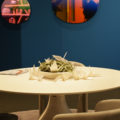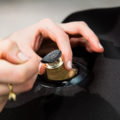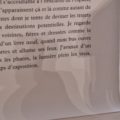FACE TO FACE WITH MOTORWAY ART
We probably know all the highways in France: tolls, triangle sandwiches and other traffic jams are all mythologies that drive each of our holidays, each of our trips to and from work. Would it be all these distractions that would have diverted us from the works of art that are there? Present on many stretches, there are nearly eighty of them in France. But the subject is not a great success, it is a kind of chestnut tree, when the news in August is not very busy and the last minutes of a TV news program must be filled. At the same time, what strange curiosities they are! Works of art, several meters high, placed in the middle of nowhere and that can only be observed for a few seconds since they travel at 130 km/h. So much so that no one really pays attention to it.
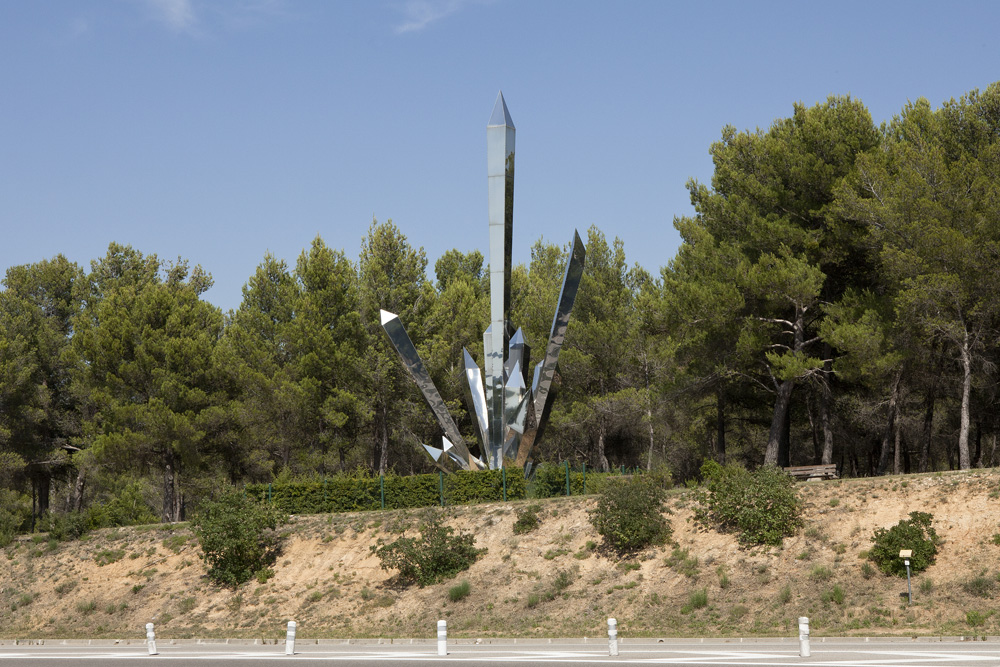
All you have to do is register “highway art” in a search engine to realize the ignorance or even contempt that these works can arouse. Indeed, the few articles that come up are more catalogues of these eccentricities: “Motorway art: five works ferociously commented” for the Nouvel Obs, “Top 20 works of motorway area, art in the service of pee breaks” on Topito’s page or even “Motorway art, this obscure object of distraction at the wheel” in the columns of the Point. In short, few articles mention this subject and even non-existent are the books that deal with this issue. For a long time, I myself took an almost condescending look at these funny sculptures; not understanding their interest, not grasping their intellectual or even aesthetic qualities. It is therefore full of misunderstandings – even suspicions – that I began to look at these forms that punctuate my car journeys six months ago.
Surprisingly, only one person seems to have been conscientiously interested in this art so far. Julien Lelièvre, a French graphic designer and photographer, received a grant from the Centre national d’art plastique (Cnap) in 2009 to inventory it. A colossal task because everyone seems to be unaware of the presence of these sculptures. The Ministry of Culture is not concerned by the issue, the Ministry of Transport is not very passionate – although it is involved – and some motorway companies sometimes do not even know that these objects are present on their section. Five years were therefore necessary for him to list them. After hundreds of kilometres travelled, dozens of calls made, he finally presented an exhaustive report of the works erected on our highways from the 1950s to the 1970s. However, there is currently no justification for their presence.

It is true that in France, the commissioning of works of art has long ruled over public policy. So much so that legislators have adopted a law obliging public buildings to decorate themselves with the work of a plastic artist. A specific procedure, commonly known as “artistic 1%”, which forces the state to reserve 1% of the budget for its station, school or courthouse constructions for a work. But strangely enough, this law never included highways not granted to private companies. Only a decree – with a much lower legal value than a law – encourages motorway companies to set aside one thousandth of their budget for a work of art. So, since the 1960s, the presence of these statues has been a matter of goodwill. Especially since, since the legislation was much more flexible in the 1980s and 1990s, these strange monuments were placed without any real supervision.
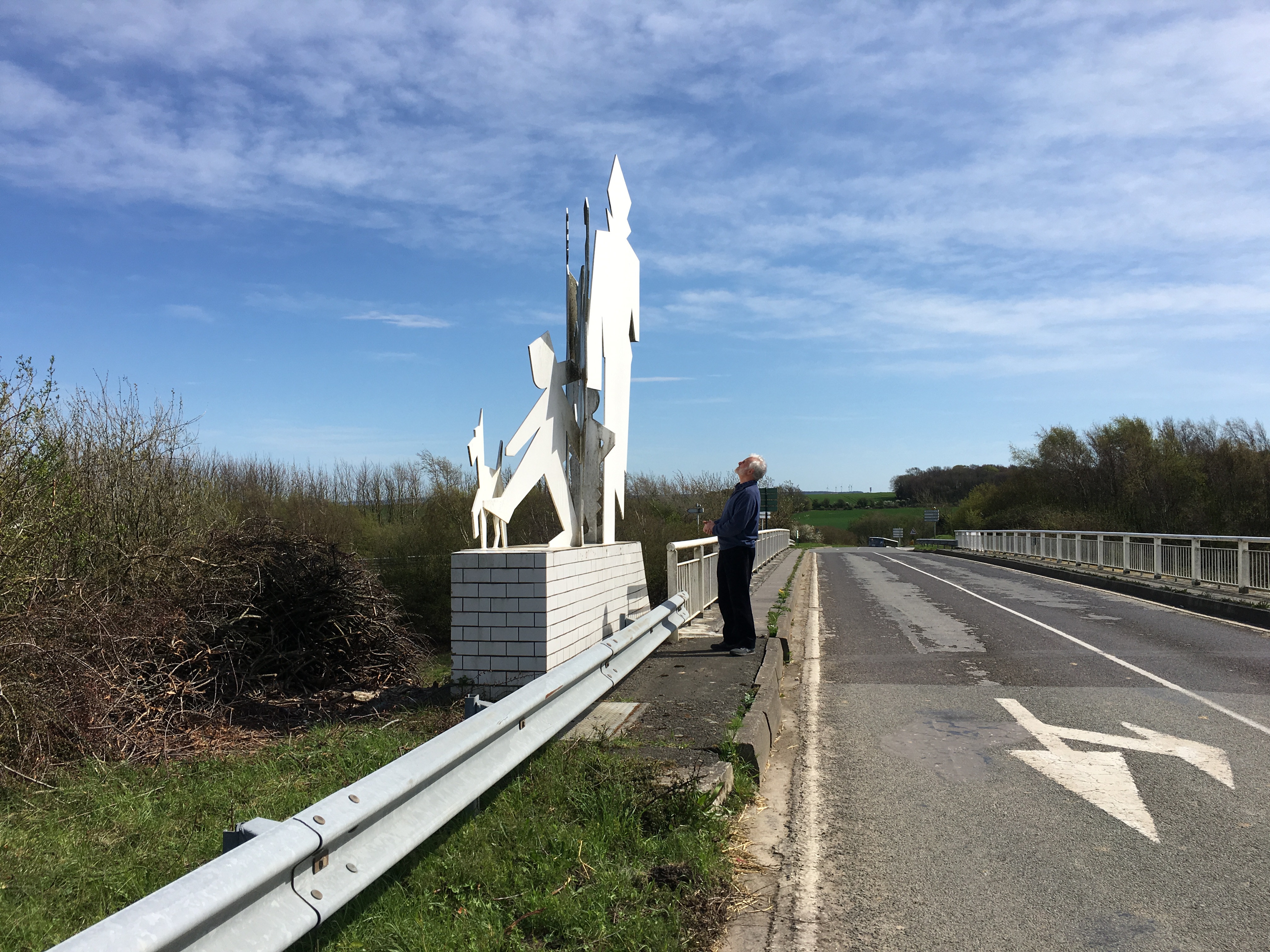
Proof of this is the nine works of Bruno Maillard. Located in the north of France, between Boulogne-sur-Mer and the city of Calais since 1991, these statues represent all the sports practiced in the Hauts-de-France region such as hunting, sailing, horse riding and tennis. The presence of these works on the A16 motorway was promoted by Olivier Frérot, the former departmental director of public works, a branch of the Ministry of Transport that no longer exists today. At the time, Olivier Frérot was in charge of building this road and, he acknowledges, the decision to choose this artist over another naturally came back to him:
When I started to want to work with Bruno Maillard, I got the approval of my director, period. He didn’t accompany me any further, he just trusted me. I was all alone, but I felt responsible for this mission. Of course, I asked for advice around me; but I didn’t work with a lot of people. Because the risk when you multiply the decision-making chains is that a stone will start to move in.
Today he admits it, no call for tenders, no competition has been set up: he was against it. “It was a deliberate choice that was probably not very legal, but for having made contests when I had to, I don’t think it works. “For the former member of the ministry, it is impossible to carry out creative projects while respecting administrative constraints. Also, the very notion of a competition did not seem fair to him at all for artists: “It is a big job for people who are not paid. Out of ten artists who believe in it, only one succeeds. So I was against it. “In retrospect, it is therefore without fear that he assumes this arbitrary decision. Moreover, he now deplores the compliance of public servants. A conformity that, according to him, slows down, if not destroys, many artistic projects.

Common sense, against legal over-framing: this is also what Bruno Maillard, the artist who created the works on the A16 motorway, regrets. While he has long enjoyed participating in such projects, the obligations now imposed by the state are for him a threat to creativity. “Today, everything is done in a very formal way from an administrative point of view. I don’t really like it anymore, I don’t have any fun anymore, so I prefer to do something else. “Almost in reactionary nostalgia, he goes on to say that at the time, mayors, councillors and business leaders acted together in respect for the taxpayer. “We were far from the current administration. It was a time when politicians were not afraid of journalists, they felt more free. Not everything was done according to these strict and sterilizing rules. »
Artistic freedom in the face of legal constraints and public money: it is difficult today to close the debate. However, this tension has instilled fears so tenacious that they have now become reproaches. And contrary to what one might think, for art professionals supporting these public projects is far from self-evident. For Laurent Le Bon, director of the Picasso Museum in Paris and co-author of the book L’art à ciel ouvert – Commande publiques en France, this can be explained by the fact that since the appearance of the 1% in the 1950s, this legislation has very quickly been used to finance projects without a proven artistic vocation, “or in the worst case to finance relatives. “This furious discount in terms of quality quickly diverted the art world from these events. In 1998, Yves Aguilar published his thesis Un art de fonctionnaires: le 1 %, in which he stated that the refusal of renowned artists to submit to the competitions required by public commissions had opened the door to many artists whose aesthetic qualities of the work might seem dubious. The latter would even have totally specialised in public procurement, being exclusively financed by the state. When motorway art does not escape the radar of neophytes as well as art professionals, it is booed. But like any good ugly duckling, it has unsuspected qualities, which alone deserve full consideration.



